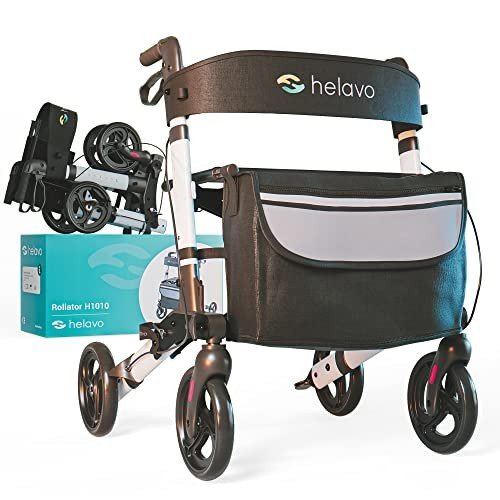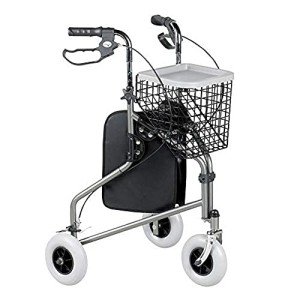
Benefits Of Rollator Walker
Add a review FollowOverview
-
Founded Date February 15, 1955
-
Sectors Telecommunications
-
Posted Jobs 0
-
Viewed 38
Company Description
Are You Getting Tired Of Rollator Walker? 10 Inspirational Sources That Will Rekindle Your Love

Rollator Walker Safety: A Comprehensive Guide
As individuals age or face mobility difficulties due to health problem or injury, preserving self-reliance typically ends up being a top priority. Rollator walkers, providing both assistance and mobility, have become important tools for numerous. Nevertheless, while they provide many benefits, making sure safety while using a rollator walker is paramount. This post supplies thorough insights into rollator walker safety, consisting of best practices, common risks, and important ideas for users and caregivers.
Comprehending Rollators
A rollator walker is a mobility device with wheels that allows individuals to stroll with the assistance of a frame. Unlike standard walkers, rollators usually include:
- Three or 4 wheels for much easier maneuverability
- Hand brakes for stopping and controlling speed
- A seat for resting when needed
- Storage compartments for carrying individual items
These functions make rollators suitable for both indoor and outdoor use, improving the lifestyle for users by supplying a sense of independence.
Benefits of Using Rollator Walkers
- Increased Mobility: Rollators can assist users in moving safely and easily.
- Support and Stability: With a sturdy frame and brakes, they supply necessary support when standing or walking.
- Comfort: Many rollators included padded seats, enabling users to rest as needed.
- Convenience: Integrated storage options can carry important products, freeing hands for better balance.
Common Hazards Associated with Rollator Walkers
While rollators can improve mobility and safety, they can also posture threats. Users need to know prospective dangers to lessen mishaps:
- Uneven Surfaces: Rollators may tip over if utilized on unequal or sloped terrain.
- Braking Issues: Failing to engage the brakes sufficiently can lead to falls.
- Excess Weight: Overloading the storage compartments can affect stability.
- Incorrect Use: Not utilizing the rollator as planned can result in accidents.
- Poor Maintenance: Neglecting routine checks on wheels and brakes might result in failure throughout use.
Rollator Walker Safety Tips
To improve safety while using rollator walkers, consider the following suggestions:
1. Proper Fit and Adjustment
- Height Adjustment: Ensure that the handle height is set to the user’s wrist level when standing upright. An appropriate fit encourages much better posture and control.
- Seat Height: If the rollator has a seat, ensure it’s comfortable and available for resting.
2. Regular Maintenance
- Check Brakes: Make sure hand brakes are working correctly. Adjust or change them if required.
- Check Wheels: Regularly inspect wheels for wear and tear, and guarantee they spin freely.
- Examine Frame: Check for loose screws or cracks in the frame to guarantee it remains Sturdy Rollator.
| Maintenance Task | Frequency |
|---|---|
| Brake examine | Weekly |
| Wheel assessment | Regular monthly |
| Frame examination | Regular monthly |
3. Environment Awareness
- Clear Pathways: Keep living areas complimentary from clutter and obstacles that might pose a tripping danger.
- Lighting: Ensure that areas are well-lit to prevent bad moves, specifically throughout night hours.
- Prevent Slippery Floors: Be careful on wet or waxed floorings, as they can cause falls.
4. Safe Walking Techniques
- Engage Brakes When Stopping: Always engage brakes before sitting or while resting.
- Use Proper Walking Technique: Move slowly and maintain a constant speed, taking actions that match the rollator’s width.
- Balance While Turning: Turn thoroughly, utilizing the rollator for assistance as needed.
5. Seek Assistance
- Include Caregivers: Encourage relative or caregivers to assist in navigating difficult surfaces or scenarios.
- Benefit From Community Resources: Many neighborhoods use mobility training for those utilizing walk-assisting devices.
FAQs about Rollator Walker Safety
Q1: How do I choose the ideal rollator walker?
When selecting a rollator, Mymobilityscooters.Uk think about the user’s weight, height, and planned use. It’s also vital to inspect for functions such as hand brake effectiveness and wheel size, which can impact maneuverability.
Q2: Can I use a rollator walker on irregular surface areas?
While rollators can handle a range of terrains, it is best to avoid high inclines, gravel, or cobblestones, as these can be dangerous. Adhere to flat, smooth surfaces whenever possible.
Q3: How can I avoid falls while utilizing a rollator?
Engaging the brakes when sitting, keeping paths clear, adjusting your rollator for the correct height, and being conscious of your environments can greatly reduce the threat of falls.
Q4: Are all rollator walkers the exact same?
No, rollators come in various types and sizes, designed for different requirements. Some might have additional devices like baskets, while others are Lightweight 4-Wheel Walker with Seat for Easy Mobility or feature a greater weight capability.
Q5: Is it safe to carry bags on a rollator?
Constantly be mindful of the weight limit and distribution of the load. Use the rollator’s designated storage services and avoid overwhelming it.
Adjustable COSTWAY Foldable Rollator for Easy Mobility walkers are important devices that enhance mobility and promote independence for users facing mobility difficulties. However, guaranteeing safety while using these gadgets is essential. By understanding prospective dangers, adhering to safe practices, and keeping the walker regularly, users can enjoy the benefits of their rollator with reduced threat. Ultimately, the goal is to assist in confidence and stability, allowing people to navigate their world with security and ease. As care providers, family members, and communities focus on safety, they empower users towards a much better, more independent quality of life.


